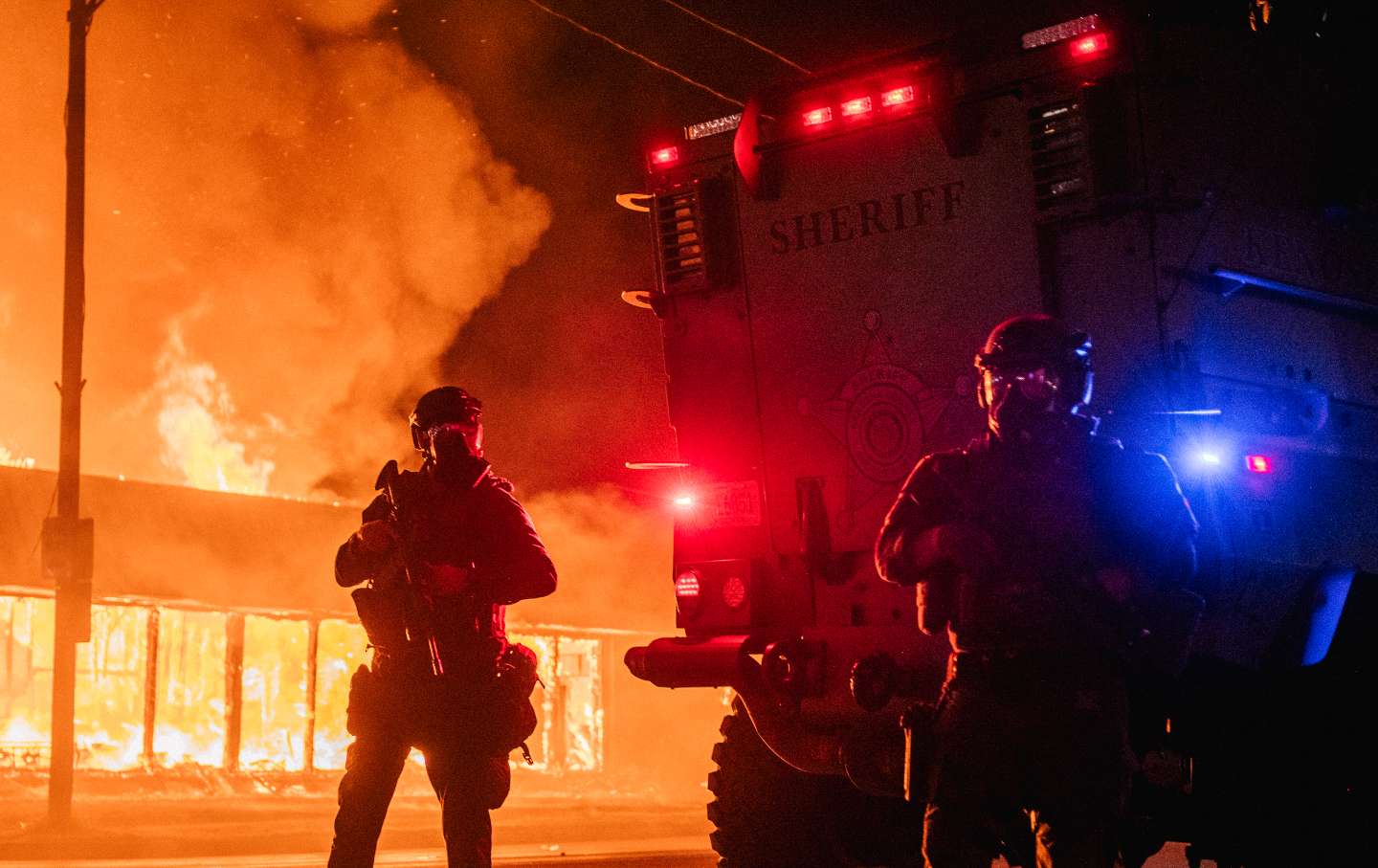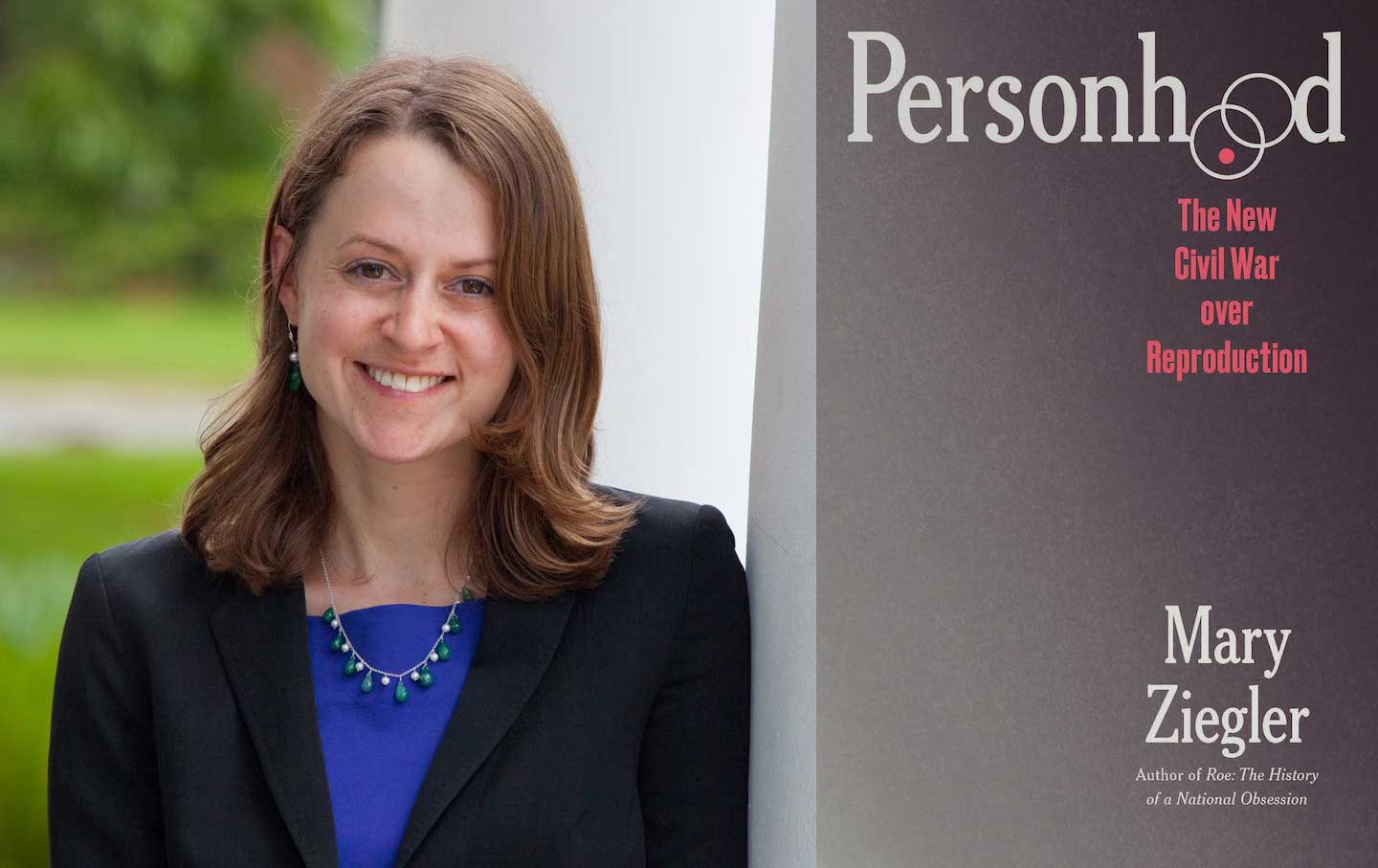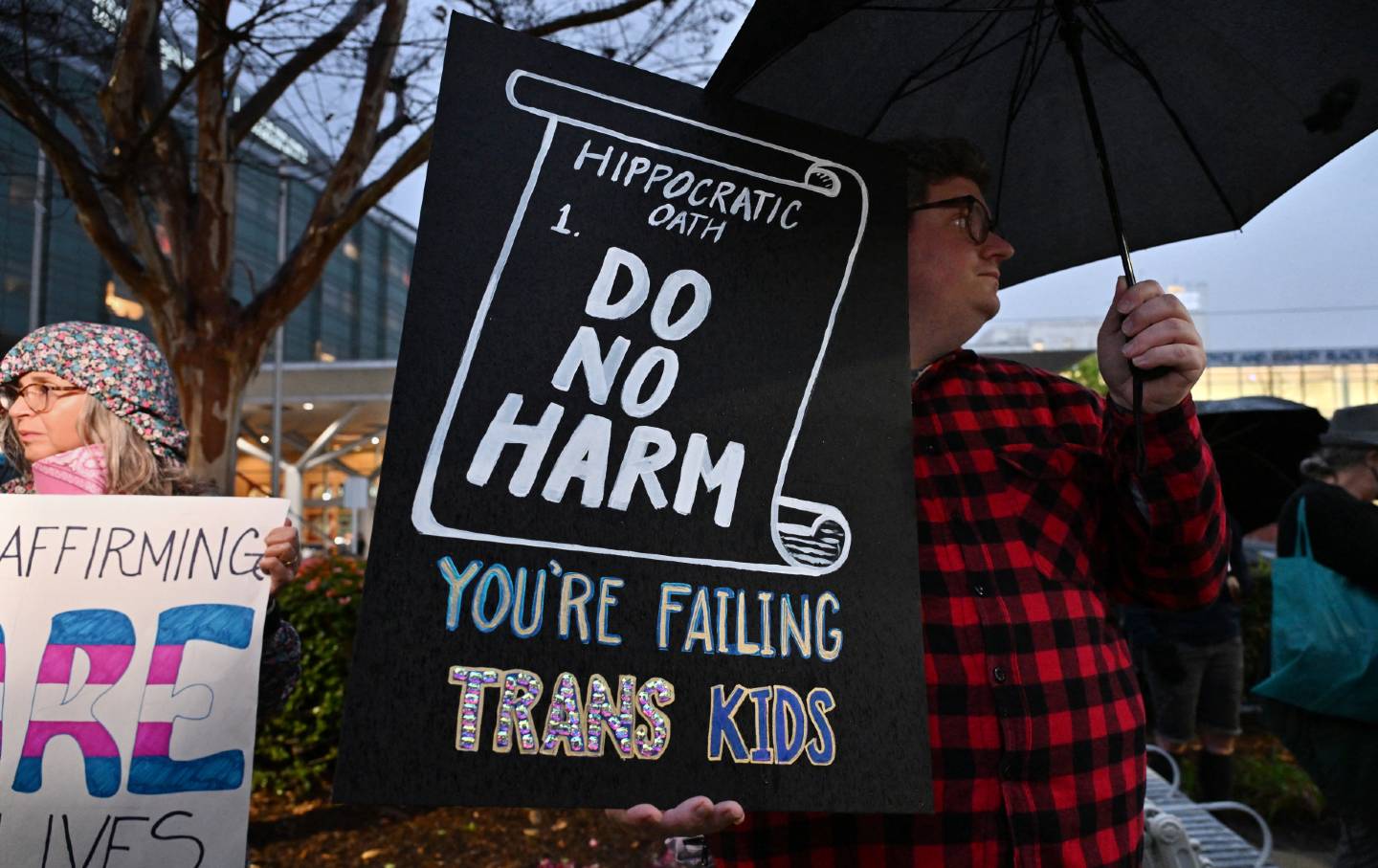Americans Are More Violent Than Ever, and We Have No One to Blame but Ourselves
This has been a violent American century—but even less recognized is how our War on Terror helped us to turn on one another.

A police armored vehicle patrols an intersection on August 24, 2020, in Kenosha, Wis.
(Brandon Bell / Getty Images)This article originally appeared at TomDispatch.com. To stay on top of important articles like these, sign up to receive the latest updates from TomDispatch.com.
Blame Donald Trump and all too many of his followers, but don’t just blame him or them. Yes, he was indeed responsible for the nightmare of January 6, 2021, and, in his own fashion, for the incitement of right-wing militia (terror!) groups like the Proud Boys. (“Stand back and stand by!”) But in this country, in this century, violence has become as all-American as apple pie. In these years, it’s been violence and more violence all the way, literally in the case of the Pentagon. But let me start a little more personally.
Having lived several years in rural Maryland along the Virginia border, I’ve watched the local political landscape gain ever-deepening fault lines (as is true in the United States at large).
In election season 2020, in my enclave of largely well-educated political liberals, many with at least one public servant in the family (like my military spouse), you saw a sea of blue “Biden/Harris” signs as you drove among fields of corn and grazing cattle. However, as you approached the Virginia border, a smattering of black, white, and blue pro-police flags—like so many photographic negatives of the American flag—began popping up in response to growing protests elsewhere in the country against police brutality and violence toward communities of color. And the farther you traveled into Virginia, the more likely you were to see former President Donald Trump’s signature “Make America Great Again” signs, as well as occasional Confederate flags, on houses and lawns. After President Biden’s inauguration in January 2021, those Biden/Harris signs disappeared or were occasionally replaced by American flags, but the pro-police flags and MAGA signs remained, signaling an increasingly split nation.
Such changes in the landscape are still all too visible. A newcomer to our region might even assume that such a split between those still dreaming of a country reminiscent of the Old South, or perhaps a future Trumpland, and American democrats like me (who would generally rather ignore the existence of the first group than grasp why they came into being) was how it had always been.
America the Violent
These days, it’s anything but surprising to note that this country has become remarkably polarized. According to a recent Pew survey, 63 percent of Democrats view Republicans as immoral (up from 35 percent in 2016), while 72 percent of Republicans feel the same way about Democrats (up from 47 percent seven years ago).
In truth, there’s nothing that new about an American tendency to reduce our fellow countrymen to their political leanings. According to a 2014 Vox article citing sociological research, in 1960, just 5 percent of Republican parents said they would be against their children marrying someone who supported a different political party. By 2010, nearly half of such respondents reported that they would be displeased.
Such an atmosphere of increasing division is reflected in recent trends in gun purchases. In 2020, more firearms were sold than in any previous year on record and, in the years that followed, those sales would only increase. By now, almost one in five American households have a weapon, nearly 400 million of them, and that weaponry is only growing more deadly. In 2020, another parent of young children I know saw a large pro-police flag hanging from the entrance of a nearby farm and told me he suddenly thought: This is the first time I feel afraid in my own country. And indeed, he responded (as he never thought he would) by purchasing a gun, fearing a future militarized coup the likes of which almost arrived on January 6, 2021.
Even some of our youngest citizens have caught this fever of fear and violence. At a recent neighborhood party, a young child reported that if Donald Trump were ever to go to jail, she would bake a giant orange Trump-shaped cake, cut off the head, and eat it to celebrate. I had to laugh and then, instead of saying what first came to mind—that it would feel great to do so!—I found myself piously telling her that we probably shouldn’t dream of that kind of proto-violence, even when it comes to leaders who have caused as much suffering as Trump.
Over the past two decades, however, it’s a fact that Americans have grown ever more violent, as have our police. Mass shootings are spiking, for example. And despite the government’s longstanding preoccupation with Islamist militants, over the past decade more than 75% of politically related murders in this country have been committed by far-right extremists, just like the ones tending their fields in my region who, being white, the police would never assume to be “not from here” and so, by definition, dangerously sympathetic to extremists.
America’s Forever Wars Turn Inward
How did we get to this point of violence at home?
If you held a gun to my head (no pun intended) and demanded an answer, I’d say that our decision to respond to the September 11, 2001, attacks on the World Trade Center and the Pentagon with the military invasions of Afghanistan and then Iraq, as well as the launching of a “Global War on Terror,” played a major role in shaping the sort of worldview that’s now become all too American.
Since those initial invasions, after all, Pentagon spending has ballooned almost beyond imagining, being now about twice the 2000 budget in inflation-controlled dollars. Meanwhile, spending on health care, education, job creation, and infrastructure has increased so much more slowly. And don’t forget that, in the same years, our police became ever more strikingly militarized (on which more to come). In other words, while we’ve been spending ever greater sums to hurt others, in the process we’ve hurt ourselves, in part by spending far too little to make ourselves healthier, smarter, connected by stronger roads and bridges, and climate-resilient.
Popular
“swipe left below to view more authors”Swipe →Another subtler reason is that most of us don’t get what violence is until we suddenly find ourselves caught up in it. In January 1973, after all, the government ended 25 years of the draft, turning our military into an “all-volunteer” force. So many decades later, most Americans don’t know anyone who’s served in our armed forces.
This, in turn, has meant that our 21st-century war on terror, the most prolonged set of US conflicts since the Vietnam War era, has been handled by volunteers who experience both longer and more frequent deployments and return home to ever fewer people who have the slightest idea what they’ve been through. As a result, many Americans are now unfamiliar with what killing people professionally does to you. Most have no idea what it’s like to see a family member return from a military deployment in the Middle East or sub-Saharan Africa completely changed—with a 1,000-yard stare that makes eye contact hard, a tendency to startle at loud noises, and possibly a formidable temper. For many privileged Americans fortunate not to live that life or dwell in crime-ridden neighborhoods, violence is something left to Hollywood movies until, at least, someone opens up with an automatic weapon in your local supermarket or dance hall.
No wonder it’s been so easy for Donald Trump and many others to cast blame locally rather than on the effects of the omnipresent war on terror and so many related global forces of terror that are hard to capture in political slogans. In response to his recent Justice Department election interference indictment, Trump told his supporters, “They’re not coming after me. They’re coming after you.”
In a sense, he was right when it came to the government in this century. Until recently, when President Biden led the way in injecting hundreds of billions of dollars into growing a clean-energy economy domestically, American policies had overwhelmingly been directed at fighting unsuccessful wars abroad rather than creating job (or life) security here at home for the high-school educated men to whom Trump unfortunately appeals so strongly.
The War on Terror Comes Home
Yet what Trump’s rhetoric of violence and victimization obscures is the way increasingly militarized US policies have encouraged Americans to seek out terror in one another. The Costs of War Project at Brown University, which I helped found, has focused on just such policies. Most notably, anthropologist Jessica Katzenstein has shown how the Pentagon’s 1033 program, begun in the 1990s, funneled startling amounts of excess military equipment (sometimes right off distant battlefields), including armored personnel carriers, grenade launchers, and sniper rifles, to thousands of federal and local law enforcement agencies, including park, campus, and school police throughout the United States.
That program grew dramatically with the post-9/11 buildup of the military-industrial complex. Police departments applying for such donations needed to explain that they would help them in the fight against drugs or terror. Chillingly, as Katzenstein notes, if police departments don’t have an obvious use for such weaponry, equipment, and vehicles, they have to find one fast, including quelling protests or executing home searches, which have increased significantly in communities of color in these years.
Under such circumstances, it becomes easier to imagine why, according to the assessments of some combat veterans, our police can now look more heavily armored than US troops in foreign war zones. Officers wearing gas masks and bulletproof vests typically showed up in Ferguson, Mo., back in 2014 with K-9 units, pointing sniper rifles at peaceful protesters and using tear gas, stun grenades, and smoke bombs to disperse crowds in that small midwestern city where an unarmed black teenager had been shot and killed by a police officer several days earlier. And in the years since it’s only gotten worse nationwide.
At the same time, law enforcement of all stripes adopted a new approach called “intelligence-led policing.” The massive Department of Homeland Security, formed in response to the war on terror, has also been training police from across America in counterterrorism tactics, theoretically based on preventing crime rather than responding to it.
While such a focus may sound positive, it’s helped bring the war on terror home by ensuring that the FBI and local police monitor particular ethnic, religious, and political groups—most notably, Muslim citizens and legal residents. Under far more lax standards for surveillance ushered in by laws and policies like the 2001 Patriot Act, many Muslims have been targeted without the slightest suspicion of wrongdoing. The FBI even hired Muslim Americans to act as informants in their own communities, in certain cases encouraging young men to profess their sympathy for Islamist extremist groups and acts of mass violence. In such a world, it shouldn’t be surprising that hate crimes, incidents of racial profiling, and discriminatory comments by public figures spiked in the years after 9/11 and only continue to rise.
Once you introduce injustice into a system, it can be applied against anyone. And that’s just what’s happened. Civil-rights groups have documented cases in which, for instance, the FBI used sting operations to infiltrate, surveil, and target left-wing racial-justice activists during the summer of 2020 as America erupted in protest over the police killing of another unarmed black man, George Floyd.
A lawsuit filed this summer by the American Civil Liberties Union, for instance, alleges that a young Colorado police detective went undercover with a local racial justice organization and tried to enmesh one of its members in an entirely fabricated gun-running operation. In a related case, the FBI reportedly hired as an informant a convicted felon who encouraged two Black racial justice activists to assassinate the Colorado attorney general.
Now, President Biden’s Department of Homeland Security and related law enforcement agencies are focusing their surveillance more on anti-government and white supremacist groups. If terror is a hypothetical rationale for the police getting more weaponry, then anyone can manufacture it. If, on the other hand, it’s about real plans to commit acts of violence, then the overwhelming perpetrators during the Trump years were our government and the president’s right-wing extremist collaborators. In other words, you could finally say that the “terror” of the war on terror had come home to roost.
War and Nationalism
Though the start of a war may cause people to rally around their leaders, wars against something nebulous like terror or, in Russian President Vladimir Putin’s case, “Ukrainian Nazis,” tend to prove short-lived in their ability to unify. Since Putin’s invasion of Ukraine in early 2022, for instance, hundreds of thousands of Russians have fled their country to avoid having to fight their Ukrainian neighbors who often constitute part of their extended families, while their president has called them “flies that we spit out of our mouths.”
As many Americans condemn Russia for its grim invasion, it’s easy to forget that for more than two decades now, others in our world have viewed our post-9/11 foreign policy in much the way we now view Russia’s—as imperialist and expansionist. After all, the United States invaded two countries, while using the 9/11 attacks to launch a war on terror globally that metastasized into US counterterror activities in 85 nations.
This has, in fact, been the violent American century, but even less recognized here is how our war on terror helped cause us to turn on one another. It injected fear and the weaponry that goes with it into a country where relatively prosperous, connected communities like mine would have had the potential to expand and offer other Americans far more robust support.
If we don’t find a way to pay more attention to why this didn’t happen and just how we did so much negatively to ourselves, then a police-state mentality and its potential companion, civil war (like the ones we’ve seen in countries we sought to “democratize” by force of arms) may, in the end, become the deepest reality of an ever more polarized America. Of that, Donald Trump is but a symptom.
Hold the powerful to account by supporting The Nation
The chaos and cruelty of the Trump administration reaches new lows each week.
Trump’s catastrophic “Liberation Day” has wreaked havoc on the world economy and set up yet another constitutional crisis at home. Plainclothes officers continue to abduct university students off the streets. So-called “enemy aliens” are flown abroad to a mega prison against the orders of the courts. And Signalgate promises to be the first of many incompetence scandals that expose the brutal violence at the core of the American empire.
At a time when elite universities, powerful law firms, and influential media outlets are capitulating to Trump’s intimidation, The Nation is more determined than ever before to hold the powerful to account.
In just the last month, we’ve published reporting on how Trump outsources his mass deportation agenda to other countries, exposed the administration’s appeal to obscure laws to carry out its repressive agenda, and amplified the voices of brave student activists targeted by universities.
We also continue to tell the stories of those who fight back against Trump and Musk, whether on the streets in growing protest movements, in town halls across the country, or in critical state elections—like Wisconsin’s recent state Supreme Court race—that provide a model for resisting Trumpism and prove that Musk can’t buy our democracy.
This is the journalism that matters in 2025. But we can’t do this without you. As a reader-supported publication, we rely on the support of generous donors. Please, help make our essential independent journalism possible with a donation today.
In solidarity,
The Editors
The Nation








